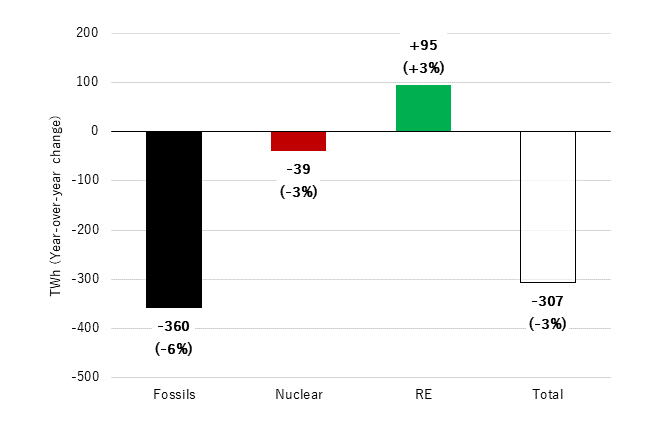Globally, in the power sector during the first six months of this year, the biggest victim of the COVID-19 pandemic has been fossil fuels. Nuclear also suffered, while renewable energy keeps progressing.
In 2020, the world has been struck by the COVID-19 pandemic. This pandemic by its gravity has significantly impacted human activities at large. Economic activity has been slowed down by sanitary measures such as mandatory or voluntary lockdowns to reduce risks exposure to the virus. The lower economic activity has resulted in lower electricity demand.
Since electricity generation from polluting fossil fuels (coal, gas, and oil) has the highest marginal costs, it is the first to be reduced when consumption decreases. Renewable capacity is increasing almost in every country in the world, and because of the low marginal costs of solar-, wind-, and hydro-power, all this new capacity is fully utilized and the renewable power generation has continued to increase.
Between January and June 2020, the combination of lower demand; -307 TWh, and higher renewable energy (RE) output; +95 TWh has heavily weighted on electricity generation from fossil fuels; -360 Terawatt-hours (TWh), and essentially coal; almost 90% of the fossils’ electricity generation decrease, with significant decreases in the United States, Europe (especially Germany), and India.
World Change in Net Electricity Generation 2020-2019 First Half

Source: International Energy Agency, Monthly Electricity Statistics – Data up to June 2020 (downloaded September 16, 2020).
Electricity generation from nuclear reactors were also negative, especially in Europe and most in France. In addition to that, only two new reactors have been reported by the International Atomic Energy Agency so far this year, while three reactors are reported as permanently shut down. The closed reactors were in the United States and France.
Though hydro power production was higher last year, electricity generation from RE has kept increasing thanks to wind; +76 TWh, and solar; +63 TWh. Among remarkable achievements, in Europe almost half of the continent’s total electricity generation has come from RE, and in the United States RE has not only provided more electricity than nuclear power, but this year also more electricity than coal for the first half year.
Moreover, despite the COVID-19 also disturbing the RE industry, progress continues. In Portugal, a procurement of electricity recently resulted in solar power being offered at €11.14/MWh, or ¥1.4/kWh. Another meaningful economic evidence that renewables are being built without subsidies at increasing speeds forcing fossil and nuclear plants out of business.
Looking back we saw nuclear power reaching peak production in 2006, coal burning peaked in 2013, fossil electricity generation in 2018. In 2020, none of these records are likely to be broken. With the visible economic trends these peaks already passed may last forever.






